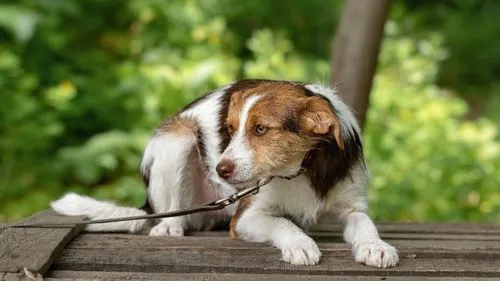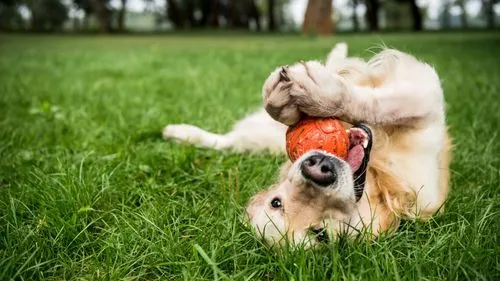How to provide a safe home for your puppy
July 28, 2023
Katka

Welcome to the wonderful world of puppyhood, where every corner is a new adventure waiting to be explored! As a new puppy parent, your top priority is to create a safe and secure home environment for your furry friend to grow and thrive in. After all, your pup's safety and wellbeing are paramount to ensuring they develop into a happy and healthy adult dog.
To help you provide the best possible home for your pup, we've compiled a list of tips from a puppy's perspective. From identifying potential hazards to creating a cozy space for your new companion, read on to discover how to create a puppy-safe home that will have your furry friend wagging their tail with joy.
Most common dog injuries in the house and garden
Despite all precautions, accidents can happen, and it's essential to be aware of the common injuries that can occur within the house and garden so you can take preventive measures.
- Cuts and scratches
Loose nails, broken glass, or sharp garden tools can cause cuts and scratches. Always ensure that such items are stored safely out of reach. - Sprains and strains
Jumping from heights, such as furniture or stairs, can lead to sprains and strains, particularly in young puppies. Provide ramps or stairs if needed, and supervise playtime to prevent excessive jumping. - Ingestion of foreign objects
Puppies are curious and might ingest objects like toys, stones, or other small items. Keep small objects off the floor and provide appropriate toys that won't break into small pieces. - Poisoning
As mentioned earlier, toxic plants and substances like fertilizers or pesticides can lead to poisoning. Be vigilant about what's in your garden and where you store your household products. - Heatstroke or hypothermia
Extreme temperatures can affect your puppy's health. Provide shade and fresh water in the garden during hot days and warm shelter during cold seasons. - Drowning
Ponds or pools can pose a drowning risk. If you have a water feature, secure it with fencing or a net, and never leave your puppy unsupervised near water.
Being aware of these common injuries can help you take additional precautions in both your house and garden. Should any accidents occur, it's wise to have a pet first aid kit on hand and know the location of your nearest emergency vet.
How to puppy-proof your house
The first place to start when providing a safe home for puppy is inside the house, where your puppy will likely spend the majority of their time. Here are some key safety measures to keep in mind:

1. Toxic houseplants
Some common houseplants, like lilies, azaleas, and philodendrons, can be toxic to puppies if ingested. It's important to research which plants are safe and which are harmful to your puppy and remove any hazardous plants from your home.
2. Dangerous substances
Household cleaning products, medications, and other dangerous substances can be deadly if ingested by your puppy. Keep these items out of reach or in a secure location like a locked cabinet.
3. Dangerous areas
Puppies are curious by nature and can get into all sorts of trouble.
Hazards like open toilets, sharp objects, and unsecured trash cans can pose a danger to your puppy.
Also stairs can be a challenge for puppies who haven't yet learned how to navigate them safely. If you have stairs in your home, consider using baby gates to block off access until your puppy is comfortable using them. Open windows can also be a risk to your puppy, especially if they are located on higher floors.
Puppies can easily fall out of open windows and suffer serious injuries or even death. To prevent this, make sure that all windows are securely screened and cannot be easily opened by your puppy.
4. Electrical cables and sockets
Electrical cables and sockets can pose a risk of electrocution if chewed on by puppies. Cover any exposed electrical outlets, use cord protectors, and keep electrical cables out of reach.
5. Loose items
Small objects like buttons, beads, and coins can be choking hazards and should be kept out of reach. Be sure to keep floors clear of small objects and avoid leaving items on tables and countertops that can easily fall to the ground.
To make sure your furry friend is OK while you're away, use the Barkio app to see, hear and communicate with your dog even when you're not home.
How to puppy-proof your garden
Once your puppy is ready to explore the world outside of the house, there are additional safety considerations to keep in mind when providing a safe home for your puppy:

1. Fencing and gates
Make sure your garden is fully enclosed with sturdy fencing and secure gates to keep your puppy from wandering off or encountering potential hazards outside of your property. Check the fencing for gaps or holes and repair them if necessary.
2. Toxic garden plants
Some common garden plants like lilies, daffodils, and tulips can be toxic to puppies if ingested. Research which plants are safe and which are harmful to your puppy and remove any toxic plants from your garden.
3. Tools and small objects
Tools and small objects left in the garden can be a hazard to your puppy if they are ingested or stepped on. Keep garden tools and small objects out of reach or in a secure location.
4. Dangerous substances
Pesticides, herbicides, fertilizers, and other dangerous substances can be harmful or even deadly if ingested by your puppy. Store these items in a secure location out of reach of your puppy.
5. Water features
Water features like ponds and fountains can be dangerous for puppies that don't know how to swim. If you have a water feature, make sure it's secured with fencing or cover it with a net to prevent your puppy from falling in.

Frequently asked questions
1. What houseplants are safe for puppies?
Many houseplants are safe for puppies, including spider plants, Boston ferns, and Areca palms. However, it's best to research each plant individually before introducing it into your home.
2. What houseplants are dangerous for dogs?
Many common houseplants can be toxic to dogs if ingested. Some of these include lilies, azaleas, philodendrons, jade plants, English ivy, and sago palms. Symptoms of ingestion can range from mild irritation to severe illness or even death. It's best to research each plant before bringing it into your home, and if you're unsure, it's better to err on the side of caution and avoid potentially harmful plants. If you suspect your puppy has ingested a toxic plant, contact your vet immediately.
3. How can I prevent my puppy from chewing on electrical cables?
You can prevent your puppy from chewing on electrical cables by using cable covers or cord protectors. Another strategy is to redirect your puppy's chewing behavior towards appropriate chew toys whenever they show interest in cords.
4. My house has multiple floors. How can I ensure my puppy's safety on the stairs?
Young puppies can find stairs challenging and may be at risk of falling. Using baby gates to block off access to stairs can be an effective solution. As your puppy grows and becomes more coordinated, you can gradually introduce them to the stairs under supervision.
5. Is it necessary to fence my garden?
It is advisable to have a fully enclosed garden to prevent your puppy from wandering off and facing potential hazards. This also prevents unwanted animals from entering your garden, which could pose a risk to your puppy.
6. Can puppies swim?
While some puppies may naturally be better swimmers than others, all puppies should be supervised around water until they've been properly introduced to it and have demonstrated that they can swim. Be particularly cautious with water features in your garden, as puppies can easily fall in.
7. How can I keep my puppy safe when I'm not at home?
You can ensure your puppy's safety when you're not home by puppy-proofing your home and removing potential hazards. Using a puppy camera like the Barkio dog monitoring app, you can keep an eye on your puppy and interact with them, even when you're away.
8. What should I include in my puppy's safe space?
A safe space for your puppy should include a comfortable bed, chew toys, and water. You can use a crate or designate a specific area in your home. This space should be a place where your puppy can retreat when they feel overwhelmed or need a break.
Conclusion
Creating a safe home environment for your puppy is essential for their health and well-being. By taking the time to understand things from your puppy's point of view and making the necessary adjustments, you can ensure that your furry friend stays safe and happy both inside and outside of the house.
Whether outside or inside your puppy will need a safe space of their own where they can retreat when they feel overwhelmed or anxious. A crate or a designated area with a comfortable bed and some toys can provide your puppy with a sense of security and help them feel more at ease in their new home.
Continue reading...
Show all articlesCopyright & trademark notices
Apple, the Apple logo, and iPhone are trademarks of Apple Inc., registered in the U.S. and other countries and regions. App Store is a service mark of Apple Inc. Mac App Store is a service mark of Apple Inc. Google Play and the Google Play logo are trademarks of Google LLC. Windows® and the Windows logo are either registered trademarks or trademarks of Microsoft Corporation in the United States and/or other countries. Linux® is the registered trademark of Linus Torvalds in the U.S. and other countries.


